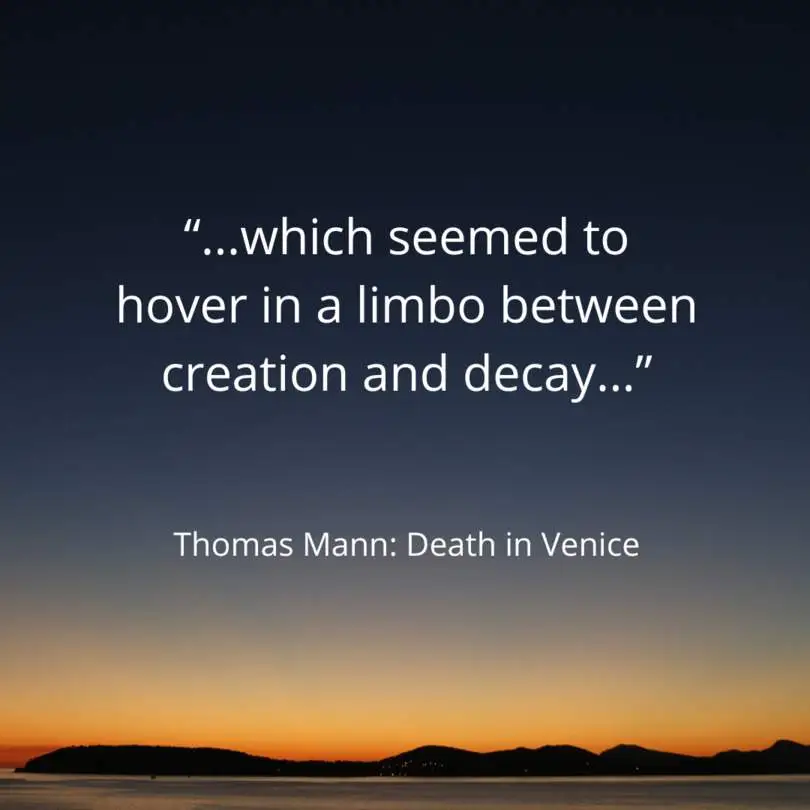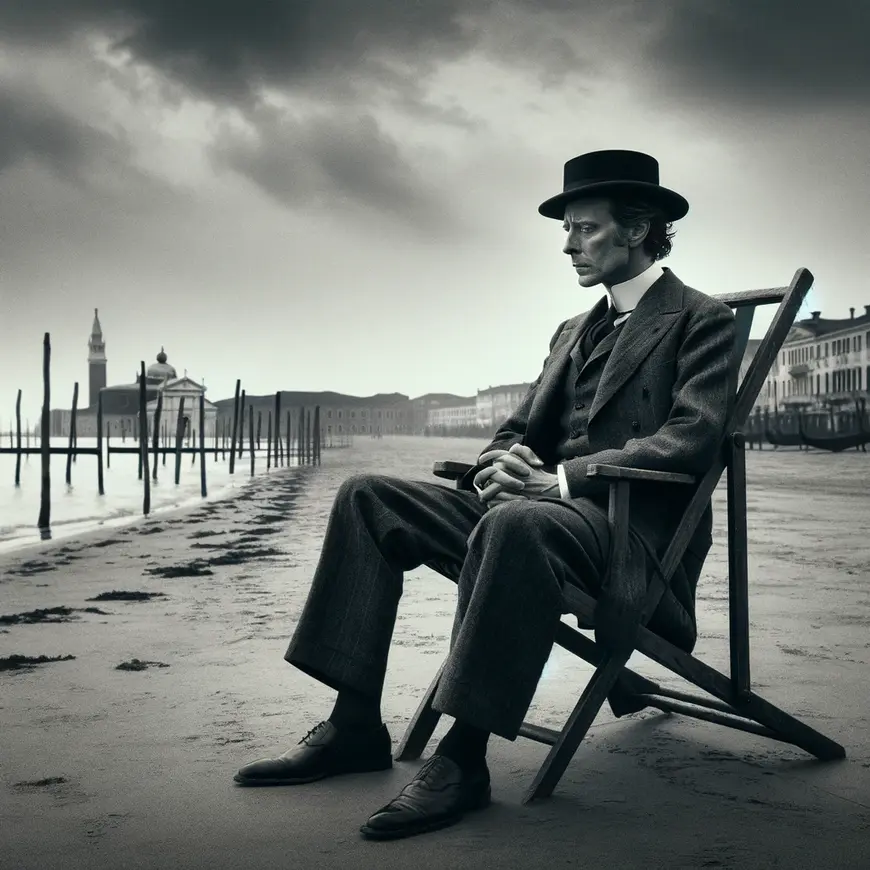A Journey into Desire and Decay – A Review of Thomas Mann’s “Death in Venice”
Mann’s Masterpiece of Eros and Thanatos – Navigating “Death in Venice“
In the realm of literature that explores the profound depths of desire and the inexorable approach of mortality, Thomas Mann’s “Death in Venice” stands as a haunting masterpiece that invites readers on a journey through the complexities of obsession, beauty, and the fragility of the human condition. With prose that is both evocative and introspective, Mann crafts a narrative that lures readers into the captivating but treacherous waters of Venice and the psyche of the protagonist, Gustav von Aschenbach.
Unveiling the Lure of Beauty: The World of “Death in Venice”
Imagine a world where the elegance of Venice’s canals and the allure of youth converge to ensnare the heart and mind of Gustav von Aschenbach, a renowned writer. “Death in Venice” introduces us to a protagonist whose staid life is disrupted by a sudden impulse to escape to Venice. Mann’s narrative traverses the realms of aestheticism, forbidden desire, and the relentless march of time. The setting of Venice, with its ethereal beauty and decay, becomes a metaphor for the dual nature of human existence.
The Venetian backdrop is not merely scenery but an integral element of the narrative, reflecting the interplay between the city’s physical decay and its enduring allure. Mann’s prose paints a vivid picture of Venice, where beauty and decay coexist in a delicate dance.

Characters in the Spotlight: A Symphony of Desires
The heart of “Death in Venice” lies within its characters, particularly Gustav von Aschenbach, whose inner turmoil becomes a central focus of the narrative. Aschenbach’s journey from a disciplined, reserved writer to a man consumed by desire and obsession mirrors the broader human experience of confronting the allure of beauty and the inevitability of decay. His character serves as a vessel for readers to explore the depths of desire and the complexities of moral conflict.
Other characters, such as Tadzio, the young Polish boy who becomes the object of Aschenbach’s infatuation, provide contrasting perspectives on beauty, youth, and the magnetic pull they exert. Mann’s portrayal of these characters serves as a mirror to the multifaceted nature of desire and the ways in which individuals grapple with their innermost longings.
Themes of Desire and Decay: Insights Explored
“Plumbing the depths of longing and mortality,” Mann seems to say, as he delves into themes that resonate deeply with the human experience. The theme of desire is central to the narrative, as Gustav von Aschenbach becomes ensnared by his infatuation with Tadzio, a young boy whose beauty embodies the ephemeral nature of youth. Mann’s exploration of desire prompts readers to reflect on the power it holds over the human heart and the ethical dilemmas it can pose.
Decay is another prominent theme that surfaces throughout the narrative. Mann’s portrayal of Venice’s physical deterioration and the protagonist’s moral decay serves as a metaphor for the inevitable decline that all life faces. The tension between the pursuit of beauty and the acknowledgment of mortality creates a narrative that is both haunting and thought-provoking.
Prose as a Elegy of Beauty and Decay: Mann’s Writing Style
Thomas Mann’s writing style is an elegy of beauty and decay, a blend of rich descriptions and introspective musings that capture the emotional landscapes of the characters and the city of Venice itself. His language is both evocative and contemplative, creating an atmosphere that immerses readers in the inner workings of Aschenbach’s mind and the delicate beauty of Venice. Mann’s prose carries a weight that conveys the intensity of human emotions and the grandeur of aestheticism.
The novel’s structure is deliberate, with Mann carefully crafting each sentence and paragraph to reflect the inner and outer landscapes of the characters. Mann’s writing style is a reflection of the characters’ internal struggles, as he explores their thoughts, desires, and conflicts with a lyrical grace that mirrors the emotional complexity of the narrative.

Timeless Relevance: Today’s Reflections
While “Death in Venice” is rooted in its historical context, its exploration of desire, beauty, and mortality remains relevant in the modern world. In an era marked by discussions of the pursuit of youth and beauty, as well as the contemplation of life’s transience, Mann’s examination of these themes offers a timeless perspective.
The theme of desire’s allure and its consequences continues to resonate, as individuals grapple with the tension between their inner longings and the ethical implications of their actions. Mann’s portrayal of the protagonist’s internal struggle serves as a reminder of the complexities of desire and the human capacity to be both drawn to beauty and repelled by its consequences.
Final Thoughts on “Death in Venice”: A Tale of Eternal Fascination
“Death in Venice” is a tale of eternal fascination that beckons readers to contemplate the allure of beauty and the inexorable approach of mortality. Thomas Mann’s narrative invites readers to journey alongside Gustav von Aschenbach as he grapples with the intoxicating power of desire and the haunting realization of his own mortality. The novel’s exquisite prose, rich character development, and poignant exploration of human longing make it a timeless masterpiece.
As readers immerse themselves in the world of “Death in Venice,” they are reminded of the power of literature to delve into the depths of human desire, the ephemeral nature of beauty, and the profound impact these forces can have on the human soul. Mann’s prose becomes a vessel through which readers can contemplate their own relationships with desire, beauty, and the inevitability of mortality. “Death in Venice” is a testament to the enduring allure of Mann’s insights and a reminder of the perennial fascination with the complexities of human longing and the fragility of existence.